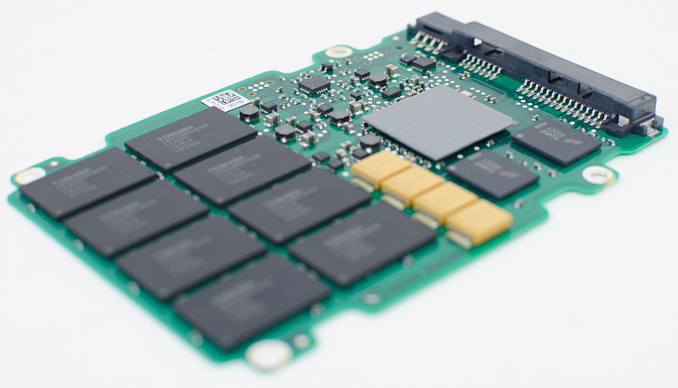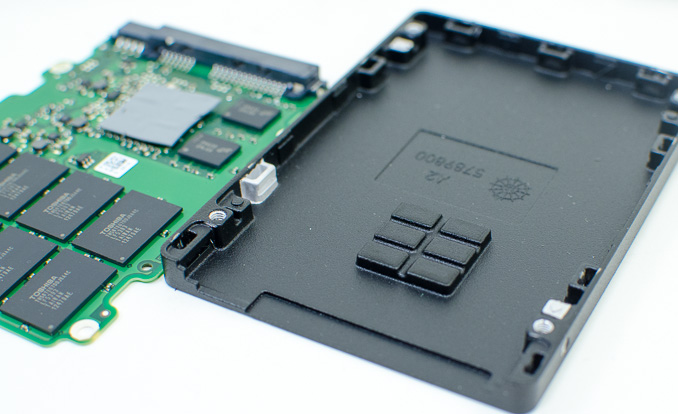The Seagate 600 & 600 Pro SSD Review
by Anand Lal Shimpi on May 7, 2013 8:00 AM ESTFinal Words
It's really good to see another SSD maker recognize the value of Link A Media's controller architecture and use it. Seagate's 600 SSD is a great drive, particularly thanks to how well it performs in a full drive scenario. The 600/600 Pro's peak performance is good, but combine it with great worst case scenario performance and you have the makings of a very good drive.
For client users I see no reason to consider the 600 Pro over the 600. If you need the power fail protection then the 600 Pro is your only option. Similarly if you need more endurance, the 600 Pro makes sense there as well. For everyone else, the 600 should do very well (in fact, it'll likely perform more consistently than many other drives I've seen branded as enterprise solutions).
There are two downsides to Seagate's 600/600 Pro: 1) idle power consumption and 2) no hardware encryption support. The first can be a deal breaker for notebook users. Unfortunately here Seagate is at the mercy of Link A Media. The LM87800 controller seems to have enterprise beginnings, where idle power just doesn't matter as much. Power consumption under load is great, but high idle power draw can really hurt in many light workload mobile applications. Desktop users won't be impacted. The lack of hardware encryption support and support for Microsoft's eDrive standard is less of an issue, but it's hard to not want those things after seeing what Crucial's M500 can do.
Long term I do wonder what will happen to the Seagate/LAMD relationship. Link A Media is now owned by Hynix, and last I heard Hynix didn't want drive makers using LAMD controllers without Hynix NAND. Obviously the 600/600 Pro were in development since before the acquisition so I wouldn't expect to see any issues here, but I get the impression that the successor to these drives won't be based on a Link A Media controller. It's no skin off of the 600's back for its successor to go a different route, but I worry that the best feature of the 600 may get lost in the process. What makes the 600 great is its balance of high peak performance with solid minimum performance. Performance consistency isn't as good as on Corsair's Neutron (another LM87800 drive) but it's far better than a lot of the drives on the market today. Ultimately what this means is you can use more of the Seagate 600's capacity than you could on other drives without performance suffering considerably. I usually recommend keeping around 20% of your drive free in order to improve IO consistency, but with LAMD based drives I'm actually ok shrinking that recommendation to 10% or below. There are obviously benefits if you keep more free space on your drive, but Seagate's 600 doesn't need the spare area as badly as others - and this is what I like most about the 600.
Of course the usual caveats apply. Although the LM87800 is a fairly well understood controller by this point, I'd still like to see how Seagate's validation and testing have done before broadly recommending the drive. I would assume the 600/600 Pro have been well tested given Seagate's experience in the HDD industry, but when it comes to SSDs I've learned to never take anything for granted. There's also the question of how regularly/quickly we should expect to see firmware updates for these drives, should issues arise. Again, I feel like Seagate will be better here than most first timers in the SSD market but these are all caveats I've applied in the past when dealing with a relative newcomer.












59 Comments
View All Comments
StealthGhost - Wednesday, May 8, 2013 - link
To me it was always just that HDDs are vastly different than SSDs. Making SSDs when you make HDDs is like starting from scratch almost. That is why the most random companies are making SSDs, because they made flash storage before. Corsair, OCZ, Crucial harddrives? I've owned RAM from all 3 but never a harddrive, but it makes sense for them to side step over from RAM to SSD, not so much for WD to go all the way down and then back up over to SSD.I hope WD becomes a big name in SSDs though, I have 5 WD harddrives that I can think of off the top of my head and one is from 2003. As you can tell, they're my favorite HDD manufacturer.
phillyry - Sunday, May 12, 2013 - link
Cactusdog, "I don't understand why Seagate and WD were so slow in the SSD market."Because they didn't want to destroy their reputations with a the shenanigans that was going on in the first couple gens of SSDs. They wisely waited until the tech was mature so that their multibillion dollar reputations wouldn't go down the drain.
Tams80 - Tuesday, May 7, 2013 - link
Same. I think around 500GB is the minimum I'd prepared to go with (for a laptop/mobile computer). They are still a bit too pricey and from my experience the hybrid drives, while good, aren't really worth it. 1TB would be great, but that will probably require waiting a few years.The 840 Pro looks to still be the best, but yes, it's still far too expensive for me. =(
klmccaughey - Tuesday, May 7, 2013 - link
The 240GB non Pro 840 is pretty good unless you are doing a lot of writing - very well priced.I have a 2TB HD and a 256GB Steam drive. With Steam Tool / or caching software that is plenty. My C drive is 2 x 128GB Vertex 3's in Raid 0.
Don't wait to switch! Just get what you can and add more when you can - you will never look back :)
MrSpadge - Tuesday, May 7, 2013 - link
Yeah.. just make smart use of the space you've got and you should be able to get by with much smaller SSDs than 500 GB. Personally using 64 GB to cache my 3 TB HDD - fast enough for me :)phillyry - Sunday, May 12, 2013 - link
The OP is talking about a mobile computer (laptop), not a desktop solution where you can have additional hard drives.creed3020 - Tuesday, May 7, 2013 - link
Seagate may be late to the game but wow what an entrance! Going with the LM87800 almost guaranteed a strong performer as we already know from the Corsair Neutron's history. Their own special sauce added to the firmware shows that they are taking this market seriously.The HDD manufacturers, glorious duopoly and all, need to see the writing on the wall and get some products into this market vertical. There will be a need for spinning platters for years to come still as 4TB SSDs are still a good ways out.
I'm currently on the fence for a Samsung 840 500GB but this announcement I need to wait and see how the reliability on these drives pans out as this may be the better choice.
Oxford Guy - Wednesday, May 8, 2013 - link
MLC drives are generally going to be more reliable than TLC drives, unless you're dealing with firmware bugs (like the horribly buggy 1st generation Sandforce controller in the Vertex 2e)name99 - Wednesday, May 8, 2013 - link
"Seagate may be late to the game but wow what an entrance!"To me this is in the interesting point. Presumably Seagate are interested in surviving for more than the next five years. Which means they have to be in the broadly defined storage business, not just the HD business. Which in turn means: raises the question --- presumably they want to be the equivalent in the flash business of their role in the HD business?
What would that take? If they were doing it seriously, it would take
(a) own the controller. It seems they already own the firmware. Perhaps they don't care much about the LAMD/Hynix link because the next step is to design their own controller?
(b) fab the flash. Until they do that, as has been said, they're just one of a dozen assemblers. Of course fabbing flash is not a completely trivial business to get into... So --- buy Hynix (or someone else)? Or not the whole company, but at least the flash division? I suspect we will see something like this.
If they DO own the firmware, the chip, and the flash, they are at least in a rather better position.
They can start to apply real engineering to these devices in a way we haven't yet seen, most obviously in much better power performance, both idle power and peak random writes power. There may also be scope for other innovations once you own the entire pipeline, for example you can tweak the flash being fabbed for a more precise set of specs, or you can drive it to tend to certain (known) failure modes which your firmware is set up to work around.
JellyRoll - Tuesday, May 7, 2013 - link
Corsair recently released new versions of the Neutrons with a die shrink, are these Neutrons compared in the article with the new NAND?